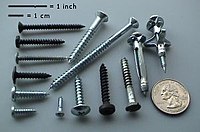
Photo from wikipedia
PurposeRadial magnetic resonance imaging (MRI) is the most accurate diagnostic tool in assessing cam-type femoroacetabular impingement. Plain radiographs, however, are useful for the initial diagnosis in the daily practice and… Click to show full abstract
PurposeRadial magnetic resonance imaging (MRI) is the most accurate diagnostic tool in assessing cam-type femoroacetabular impingement. Plain radiographs, however, are useful for the initial diagnosis in the daily practice and there is still debate regarding the optimal lateral view. The purpose of this study was to investigate the reliability of detecting cam deformities using the frog-leg view or the 45° Dunn view by comparison with radial MRI.Material66 consecutive hips with plain radiographs (36 with AP and frog-leg views, 30 with AP and 45° Dunn views) and radial MRI were assessed. Alpha angle measurements were obtained both for radiographs and for radial MRI reformats by two investigators. Statistics included frequency analysis, bivariate linear correlation analyses, and cross-table analyses testing the sensitivity and specificity of the radiographic projections for detecting an alpha angle larger than 55°.ResultsThe intra-class correlation revealed excellent agreement between the two raters [ICC = 0.959, CI (0.943; 0.972)]. 50% (33/66) had the maximum alpha angle in the superior–anterior aspect of the femoral head–neck junction. Cam deformity was found in 40/66 cases (61%) in radial MRI. Pearson correlation demonstrated that the 45° Dunn view was most accurate for the superior–anterior aspect (0.730, p < 0.05). The frog-leg view was best suited for the anterior aspect (0.703, p < 0.05). The sensitivity for detecting cam deformities in the 45° Dunn view was 84 vs 62% in the frog-leg view.ConclusionThe frog-leg lateral radiograph does not provide reliable measurements of the alpha angle. This study highlights the importance of the 45° Dunn view for early detection of femoroacetabular cam-type impingement.
Journal Title: Archives of Orthopaedic and Trauma Surgery
Year Published: 2017
Link to full text (if available)
Share on Social Media: Sign Up to like & get
recommendations!